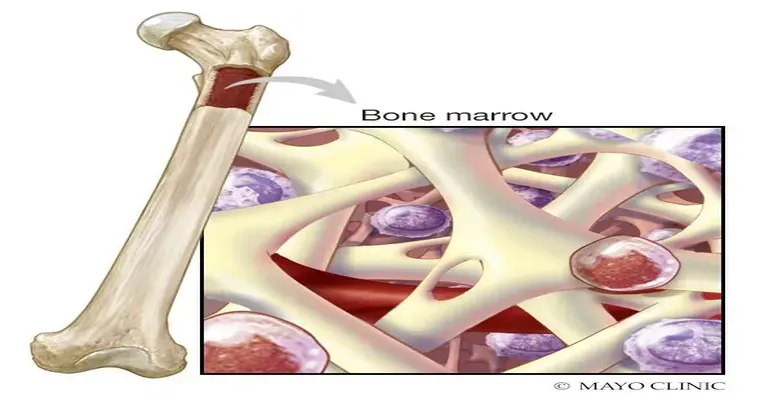Receiving a diagnosis of "bone marrow" disorders and "anemia" can be overwhelming. Understanding the connection between these two health issues is crucial for managing your condition effectively. Bone marrow is the soft tissue inside your bones responsible for producing blood cells, including "red blood cells", which are essential for transporting oxygen throughout the body. When the bone marrow is not functioning properly, it can lead to anemia, a condition characterized by a deficiency in red blood cells or hemoglobin.
What is Bone Marrow?
Bone marrow is a spongy tissue located in the center of bones. It plays a vital role in the production of various blood cells. There are two types of bone marrow: red marrow, which produces red blood cells, white blood cells, and platelets, and yellow marrow, which is primarily composed of fat cells. A healthy bone marrow function is essential for maintaining normal blood cell levels and overall health.
Understanding Anemia
Anemia occurs when you do not have enough healthy red blood cells to carry adequate oxygen to your body's tissues. Symptoms of anemia can include fatigue, weakness, and pale skin. There are several types of anemia, including iron-deficiency anemia, vitamin deficiency anemia, and anemia of chronic disease. The link between anemia and bone marrow disorders is significant, as certain conditions affecting the bone marrow can lead to decreased production of red blood cells.
Types of Bone Marrow Disorders
Several disorders can affect bone marrow function, leading to anemia:
1. "Aplastic Anemia": This rare condition occurs when the bone marrow stops producing enough blood cells, leading to severe anemia and increased risk of infections and bleeding.
2. "Myelodysplastic Syndromes (MDS)": A group of disorders caused by poorly formed or dysfunctional blood cells, MDS can lead to anemia and other blood-related issues.
3. "Leukemia": This type of cancer affects blood and bone marrow, leading to the overproduction of abnormal white blood cells, which can crowd out healthy red blood cells.
4. "Multiple Myeloma": A cancer of plasma cells in the bone marrow that can interfere with the production of healthy blood cells, leading to anemia.
Diagnosing Bone Marrow Disorders and Anemia
Diagnosing these conditions typically involves a combination of blood tests, bone marrow biopsy, and imaging studies. Blood tests can reveal low hemoglobin levels, while a bone marrow biopsy can provide insight into the health and functionality of the bone marrow. Early diagnosis is key to effective treatment and management.
Treatment Options
The treatment for anemia related to bone marrow disorders varies depending on the underlying cause. Some potential treatments include:
"Medications": Erythropoietin stimulating agents can help stimulate red blood cell production.
"Blood Transfusions": These may be necessary in severe cases of anemia.
"Bone Marrow Transplant": For certain disorders, a transplant may offer a chance for a cure.
"Nutritional Supplements": Iron, vitamin B12, and folate supplements can help if deficiencies are present.
Living with Bone Marrow Disorders and Anemia
Managing a diagnosis of bone marrow disorders and anemia requires collaboration with healthcare providers. Regular check-ups, monitoring of blood counts, and adherence to treatment plans are essential for maintaining health. Additionally, adopting a well-balanced diet rich in iron and other vital nutrients can support your overall well-being.
Conclusion
Being diagnosed with "bone marrow" disorders and "anemia" can be daunting, but understanding the connection between the two can empower patients to take control of their health. By seeking appropriate medical care and making necessary lifestyle adjustments, individuals can navigate their diagnoses and work towards better health outcomes. Always consult with healthcare professionals for personalized advice and treatment options.





